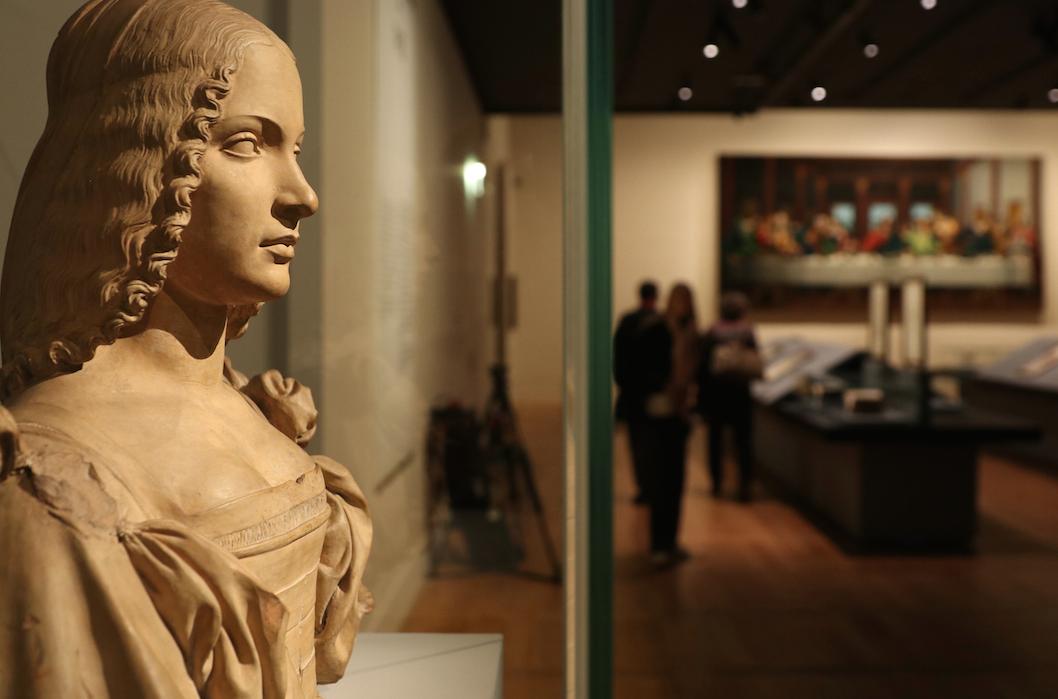With the rediscovery of antiquity at the dawn of the Renaissance, art offered a close link between beauty and morality. Florentine artists found their inspiration in Classical art’s perfection of lines to express the power of inner beauty.
Through 140 works, the Louvre Museum’s exhibit The Springtime of the Renaissance recounts the genesis of Western art’s greatest period with a closer look at sculptures that marked this new age.
Forefathers’ Legacy
Artists began as early as the 13th century to return to Classical artworks as a source of inspiration. Classical sculpture and architecture—which were best preserved—were most heavily referenced. Greco-Roman remains served as models for artists of all kinds: painters, engravers, sculptors, and architects alike.
Two reliefs presented at the 1401 competition for the second door of the Baptistery of Florence mark a turning point in Renaissance art.
While the relief by Lorenzo Ghiberti (1381–1455) won the competition and was chosen to ornament the door, the piece by Filippo Brunelleschi (1377–1446) possesses a liveliness that is undeniable.
In both artists visitors will find a novel synthesis of the medieval world with Classical art. With Brunelleschi, the influence of medieval theater is noticeable with the breakdown of the scene into different spaces. Brunelleschi emphasizes the drama, whereas Ghiberti insists on harmonizing the scene and on the elegance of the narrative fluidity, which is characteristic of gothic art.
Both of them refer to works of antiquity. Brunelleschi positions Abraham’s servant in the posture of the “Boy with Thorn” (first century B.C.), while Ghiberti gives his “Isaac” a movement echoing the torso of a centaur (A.D. first century), another well-known statue of that time.
Visual Perspective is Theorized
The spring of the Renaissance is also closely linked to the laws of perspective. For the first time, it was codified empirically by theoretician Leon Battista Alberti in his 1435 treatise, “De Pictura.”
One of the most extraordinary reliefs is doubtlessly Donatello’s “Madonna and Child” circa 1420–1425. The relief is composed according to Brunelleschi’s rules of perspective.
Converging perspective lines in a frame seen in perspective shortcut evoke a window. The illusion of space and the optical effect of a succession of planes and distances are created thanks to the stiacciato technique. The visitor discovers by looking closer that the child’s left hand is foreshortened.
Apart from the experimental aspect of this piece’s composition, the observer will notice the bond between the mother and the child actually carved between the two, literally face to face, as well as their converging looks, forming a single whole, which all suggests the complexity of motherly love, sensual and spiritual, and also the inseparability of their destiny.
This relief gave rise to a genre in Florentine sculpture, and will be reproduced in paintings as well as reliefs.
Art for Everyone
The 15th century is also characterized by the return of terracotta, a common medium in antiquity. New techniques made it possible to reproduce great artists’ creations at a low cost.
The “Madonna and Child” relief was thus spread widely. Terracotta reliefs enhanced with polychrome and gold became as popular as marble, while being less costly. But it was Florentine sculptor Lucca della Robbia (1399/1400–1482) who covered terracotta with enamel and revolutionized this domain. The white and shiny substance brings out the divine and luminous aspect of the relief.
The last theme in the exhibition centers on the busts of new patrons of the arts who marked the transition from republican ideals to the hegemony of families. A new genre then appeared: the head-and-shoulders portrait, called the “Florentine style,” which expresses the psychology of a character.
Women’s busts evoke an idealized beauty. The magnificent Marietta Strozzi expresses a contemplative inner beauty, which is achieved through the sobriety of fine and delicate lines. The search for polished simplicity brings out the implicit: the soul.
The Springtime of the Renaissance: Sculpture and the Arts in Florence closes on Jan. 6, 2014, at the Louvre Museum in Paris.





